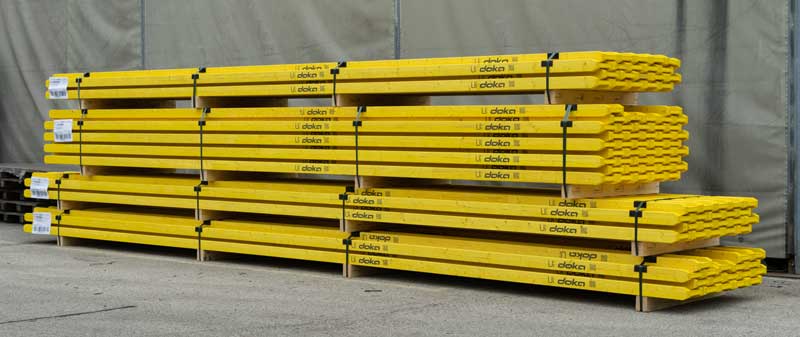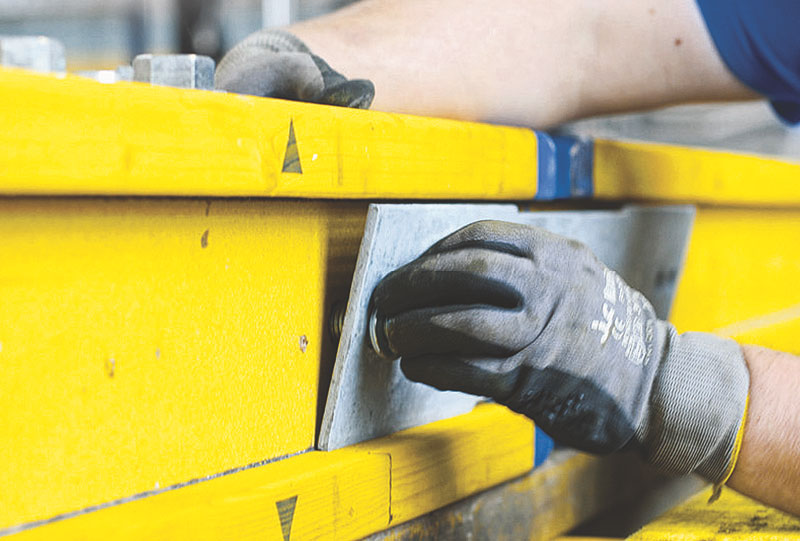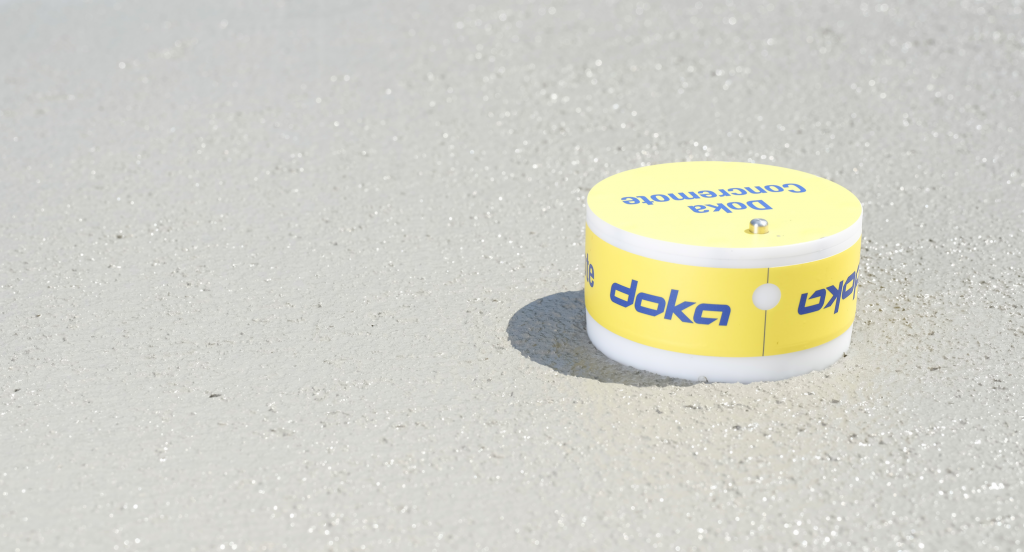Doka UK, June 16, 2020.- Formwork timber beams are one of the most widely used components within the construction industry and carry an extensive range of uses. Doka wooden formwork beams form the basis for many traditional formwork systems and hundreds of thousands of these carefully manufactured beams are used on countless construction sites every day. With many years expertise in making quality formwork systems, Doka have always insisted on their own production processes and independent certified quality management systems (ISO 9001) along the entire production chain, so customers can be assured that Doka products are of high quality and safe to use. In this article, we provide guidance on how to care for your timber beams to enhance the quality and to enable high levels of safety for forming operations on site.
Pouring
When pouring concrete into the forms, you must not exceed the permitted fresh-concrete pressures. Over-high pouring rates overload the formwork, which can cause greater deflection and risk breakage.
Stripping out the Formwork
To extend the life of a timber beam, and to enable higher levels of reuse, how the formwork is stripped plays a vital role. Doka recommend avoiding stripping the formwork until the concrete has reached sufficient strength (Concremote from Doka can also help with this process) and the person in charge has given the order for the formwork to be struck.
When stripping out the formwork, a crane should never be used to break concrete cohesion. Doka also advise that suitable tools are used such as timber wedges, special pry-bars or system features such as Framax stripping corners. It is also important to consider that when stripping out the formwork, you do not endanger the stability of any part of the structure, or of any scaffolding, platforms or formwork that are still in place.
“Doka recommend avoiding stripping the formwork until the concrete has reached sufficient strength – Concremote from Doka can help with this process“
Transporting, Stacking and Storing
When transporting the timber beams, always use strap slings to lift stacked beams and do not use chains. When moving beams not securely strapped together, take care that loose beams cannot slip.
When stacking beams, Doka advise that you stack no more than 2800kg per bundle (please refer to user manuals for more information if required). It is also advised that stacked beams are protected from extreme climatic influences such as exposure to sunshine or moisture by covering them (with breathable tarpaulins) which should reduce cracking. Only cover them and never envelope them completely and always use packers and spacers to ensure air circulation.
When considering ground conditions for stacking, you must ensure a maximum angle of inclination of ground 3%. The ground on which the stack is to be placed must be adequately firm and level and the best space for stacking would be on concreted or paved storage areas. When storing on other surfaces such as sand or gravel, suitable measures must be adopted for storage – for example, place thick plywood sheets underneath the loads.

Stack timber beams on concreted or paved storage areas where possible to lengthen product lifespan
Effects of Weather Conditions on Timber Beams
Weather can be unpredictable. Therefore, timber products are constantly exposed to humidity, variations in temperature, and precipitation and reacting correctly to this weathering will have a positive effect on the beams. Caring for your timber products will enable the beams to retain in their value over the usual lifespan. When looking at Doka timber formwork beam variations H20 top P and H20 eco P, it is advised the following when it comes to preserving their lifecycle:
When nailing:
➤ When ambient temperatures are very low, it is advised that shorter nails are used where possible, or if longer nails are to be used, then do not drive the nails all the way through.
Preventative measures:
➤ Always store all formwork beams, including used formwork beams, under a roof.
➤ If beams are obviously very wet, use spacers when stacking so that the individual beams can dry.
When the beams are exposed to severe heat, there is a risk of cracking in the flanges. The PUR end caps of the H20 top P stop cracks from forming at the ends of the beam. When there are levels of high humidity, there may be a risk of fungal attack and decay of the wood in beams that are left constantly wet.
Looking for Timber Beams?
The H20 top and H20 eco beams from Doka are familiar names all over the world, and are a great choice for any application. H20 P are sold-web timber formwork beams in accordance with EN 13377 with proven end reinforcement options in the eco and top versions available. These beams can be used in wall-formwork and slab-formwork systems, tunnel formwork, automatic climbing formwork amongst many other uses.
Timber formwork beam H20 top P, with a built-in shock absorber enables a longer lifespan. Other benefits include effective protection against moisture and UV radiation, as the beam-ends are sealed around web and fast, safe formwork set-up by referring to markings on the flanges.
Timber formwork beam H20 eco P, with a solid-web design has high quality beam flanges which is achieved by machine stress-grading. Due to the beveled flange-ends incorporating beam rivets, less damage is likely to occur to the beam ends. One additional benefit of the eco beam is the low weight which makes it easier to handle.
You can now buy timber beams through Doka’s Online Shop. Visit the Shop today and register for access to a range of formwork accessories and components at great prices.
Disclaimer: Information contained within this article is for information only, for specific guidance on caring for timber products, you should always refer to your planning and consulting specialist.










